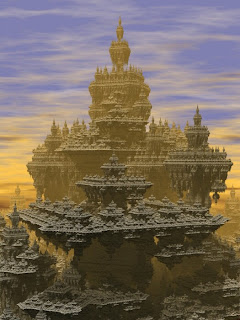
Yesterday, I received the smallest book of those that I have ever hold in my hands, which is entitled as "Secrets of impossible figures". The dimensions of the book are 3x5 cm. You can compare it's size with a 1 euro coin on the photo above. The book is filled of images of impossible figures. It was published in very limited edition, only 30 copies.

The author of the book is
Anatoly Konenko from Omsk (Russia). He is famous for his mini and micro works. He began to create mini and micro artworks since 1981. He invented technology of writing on rice and poppy grains and later on human hair. He have done many micro works in various styles - graphics, sculpture, carving on wood and bones, juvellery and knitting.
The field, in which Konenko is well known, is creating and publishing of mini books. He have done more than 200 mini books since 1994. All his books have high quality binding and inimitable elegant ornaments and decorations. With the publication of his books Anatoly Konenko is an artist, designer, engraver and bookbinder at the same time.
In 1996 he created the smallest book the world with sizes 0,9 x 0,9 mm, which was signed in the Guinness book. The photo of the book you can see below.




















 A nice pyramid of cubes was modeled and rendered by David Pearson (fpsurgeon). Each lower level of the pyramid consists of smaller cubes, which are four times more than above. So we see a simple but elegant fractal. This nice rendering was created as a further development of studing by author an open source program Structure Synth, which provides creating 3D structures from a set of user rules. One of preliminary studies you can see below.
A nice pyramid of cubes was modeled and rendered by David Pearson (fpsurgeon). Each lower level of the pyramid consists of smaller cubes, which are four times more than above. So we see a simple but elegant fractal. This nice rendering was created as a further development of studing by author an open source program Structure Synth, which provides creating 3D structures from a set of user rules. One of preliminary studies you can see below. Imagine if the top cube of the pyramid is too heavy, and the whole structure will collapse.
Imagine if the top cube of the pyramid is too heavy, and the whole structure will collapse.









